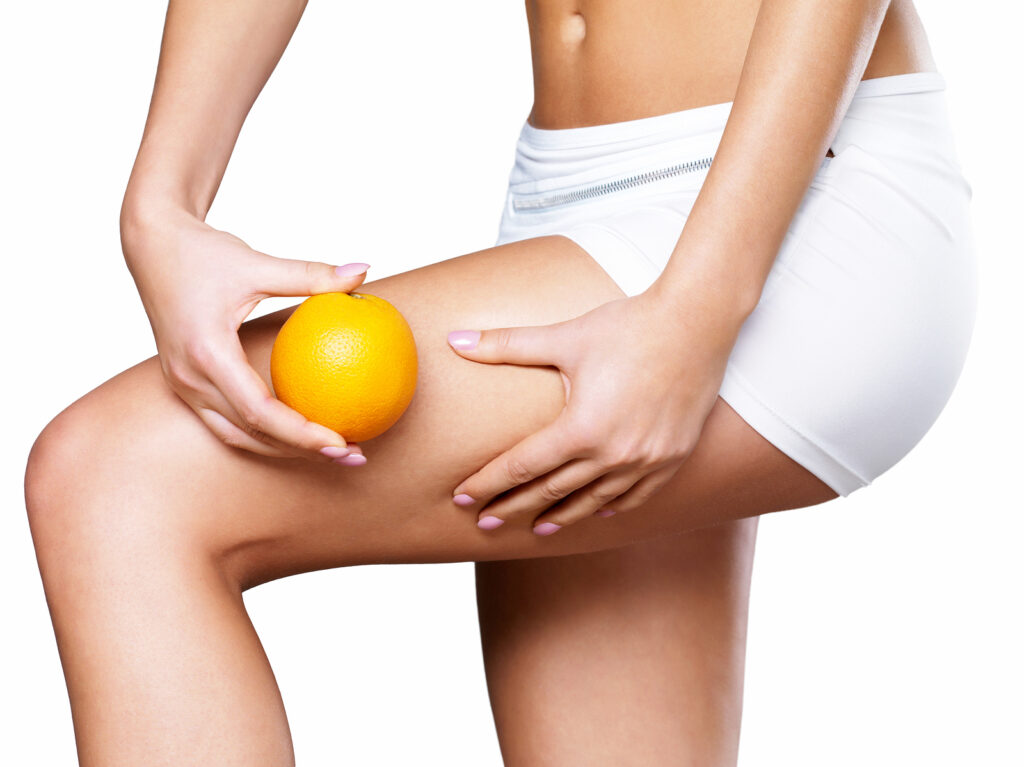
Introduction: Cellulite is a common condition that affects the appearance of the skin, particularly in areas with a high concentration of fat deposits, such as the thighs, buttocks, and abdomen. It is characterized by a dimpled, lumpy texture, often compared to an orange peel or cottage cheese. Although cellulite is not a serious health concern, it can cause self-consciousness and impact one’s body image. In this article, we will delve into what cellulite is, explore various methods to reduce its appearance, and understand the role of water, food, and exercise in managing cellulite.
Understanding Cellulite: Cellulite occurs when subcutaneous fat pushes against the connective tissue, resulting in a dimpled appearance. It is more prevalent in women than men, primarily due to differences in fat distribution and the structure of connective tissues. Factors like genetics, hormonal changes, poor diet, lack of physical activity, and even stress can contribute to the development and severity of cellulite.
Methods to Reduce Cellulite: While complete elimination of cellulite may be challenging, several methods can help minimize its appearance:
1. Topical Treatments: Various creams, lotions, and gels claim to reduce cellulite by improving blood circulation, promoting collagen production, or targeting fat cells. Ingredients like caffeine, retinol, and antioxidants are often found in these products. However, their effectiveness varies, and results may be temporary.
2. Massage Therapy: Regular massages can stimulate blood flow, lymphatic drainage, and tissue elasticity, reducing the appearance of cellulite. Techniques like deep tissue massage, dry brushing, or cupping may improve skin texture and tone, but consistent sessions are typically required for noticeable results.
3. Medical Procedures: Advanced treatments like laser therapy, radiofrequency, and ultrasound can target cellulite beneath the skin. These procedures aim to break down fat cells, stimulate collagen production, and tighten the skin. However, they can be costly and may require multiple sessions.
Water and Food: Proper hydration plays a vital role in maintaining healthy skin. Drinking an adequate amount of water throughout the day helps flush out toxins, hydrate skin cells, and improve overall skin health. While water alone cannot eliminate cellulite, it contributes to skin elasticity and a smoother appearance.
In terms of nutrition, a well-balanced diet can positively impact cellulite reduction. Consuming a variety of whole foods, such as fruits, vegetables, lean proteins, and whole grains, provides essential nutrients and antioxidants that support skin health. Antioxidant-rich foods, in particular, can help combat free radicals and reduce inflammation.
Exercise plays a crucial role in reducing the appearance of cellulite by targeting the underlying fat deposits and strengthening the muscles. Here are some exercises that can help:
1. Cardiovascular Exercises: Engaging in aerobic activities like running, cycling, swimming, or brisk walking can burn excess fat and improve circulation. Aim for at least 30 minutes of moderate-intensity cardio exercises most days of the week to maximize the benefits.
2. Strength Training: Incorporating strength training exercises into your routine helps build muscle and increase metabolism, leading to a reduction in body fat. Focus on exercises that target the areas prone to cellulite, such as squats, lunges, leg presses, and glute bridges. Aim for two to three sessions per week, allowing your muscles time to recover between workouts.
3. High-Intensity Interval Training (HIIT): HIIT workouts involve short bursts of intense activity followed by brief recovery periods. This type of training can boost metabolism, burn calories, and improve overall fitness. Include exercises like burpees, jumping jacks, mountain climbers, and high knees to get your heart rate up and target multiple muscle groups.
4. Yoga and Pilates: These low-impact exercises can help improve muscle tone, flexibility, and posture. Certain yoga and Pilates poses, like planks, bridges, and lunges, target the lower body and can contribute to cellulite reduction. Additionally, the stress-reducing benefits of these practices can have a positive impact on cellulite, as stress can worsen its appearance.
Remember, consistency is key when it comes to exercise. Make it a habit to incorporate a combination of cardiovascular exercises, strength training, and flexibility workouts into your routine. Gradually increase the intensity and duration of your workouts over time to challenge your body and achieve better results.
Other Lifestyle Considerations: Apart from water, food, and exercise, there are a few additional lifestyle factors that can support cellulite reduction:
1. Quit Smoking: Smoking damages blood vessels, reduces collagen production, and hampers blood flow, which can worsen the appearance of cellulite. Quitting smoking not only benefits your overall health but can also improve the condition of your skin.
2. Maintain a Healthy Weight: Excess body fat can contribute to the severity of cellulite. By maintaining a healthy weight through a balanced diet and regular exercise, you can reduce the overall fat content in your body and minimize the appearance of cellulite.
Conclusion: While complete eradication of cellulite may not be possible, understanding its causes and adopting a holistic approach can help manage and reduce its appearance. By combining methods like topical treatments, massage therapy, proper hydration, a nutritious diet, and regular exercise, you can improve the texture and tone of your skin, leading to a reduction in cellulite and increased confidence in your own skin. Remember to consult with a healthcare professional or a dermatologist for personalized advice and recommendations based on your specific needs.